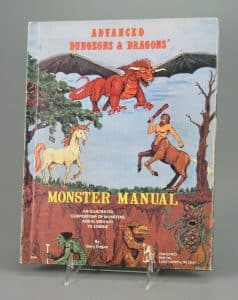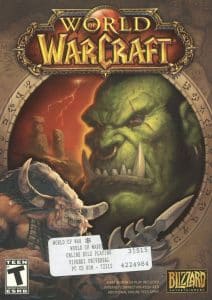 In my last post, I examined television’s stereotypical un-cool Dungeons & Dragons (D&D) player who doesn’t conform to mainstream standards of attractiveness or sociability and fits more comfortably within the fantasy world of role-playing games (RPGs). But “dork” is not a four-letter word as far as these characters are concerned. In fact, television programs offer audiences deeper experiences with D&D players than some viewers might allow themselves in real life. The shows create nuanced, three-dimensional, universally sympathetic characters who earn redemption for their previously underappreciated existences. To my earlier examples from 30 Rock, Robot Chicken, and Community, I add these episodes which validate the television misfits.
In my last post, I examined television’s stereotypical un-cool Dungeons & Dragons (D&D) player who doesn’t conform to mainstream standards of attractiveness or sociability and fits more comfortably within the fantasy world of role-playing games (RPGs). But “dork” is not a four-letter word as far as these characters are concerned. In fact, television programs offer audiences deeper experiences with D&D players than some viewers might allow themselves in real life. The shows create nuanced, three-dimensional, universally sympathetic characters who earn redemption for their previously underappreciated existences. To my earlier examples from 30 Rock, Robot Chicken, and Community, I add these episodes which validate the television misfits.
Freaks and Geeks: “Discos and Dragons”
When bad boy Daniel (a young James Franco) does a stint in the high school A/V room as punishment for pulling the fire alarm, he is surprised to feel like an outsider. Daniel can’t fix a projector, and the A/V club resents his presence—a reversal from the days when geeks were worthy of Daniel’s contempt. When the bitterness wears off, the A/V kids invite Daniel to play D&D—an unlikely pairing of players. But Daniel eventually lets down his guard and revels in the opportunity to, as Gordon puts it, “pretend to be somebody you can’t be in real life.” Thanks to creator/writer/director Paul Feig, a self-avowed geek, these scenes challenge the notion that D&D is for misfits. Are the geeks really outsiders if they have each other?*
Huge: “Live Action Role Play”
Teens at a weight loss camp escape reality and shake off mockery by Live Action Role-Playing (LARPing) with makeshift costumes and weapons. The wild battle allows them to forget not only the discipline that camp life imposes on them, but also the burdens of their supposedly imperfect bodies.**
The IT Crowd: “Jen the Fredo”
Jen agrees to entertain her employer’s out-of-town clients. After failing to satisfy the visitors’ bawdy tastes, she’s willing to accept any suggestion. Nerdy IT technician Moss offers to host a game of D&D for the men. What sounds like a terrible idea on paper (right down to the iffy character sheets) works perfectly in practice. The businessmen discover that D&D actually can be fun. They eat up the drama, including Dungeon Master Moss’s clever storytelling that heals coworker Roy’s broken heart and brings everyone to tears. The men give glowing reports to Jen’s boss and high-fives all around.
South Park: “Make Love, Not Warcraft”
 Stan, Kyle, Cartman, and Kenny’s adventures liberate them from a sleepy town where they never seem welcome. In this episode, the kids save the World of Warcraft—that is, the fictional realm of a massively multiplayer online role-playing game (MMORPG), a genre that would not exist without D&D. So keep that can of Rockstar handy—I’ll offer my take on “Make Love, Not Warcraft” and other shows’ video game-themed episodes in the next installment of my Screen-Play series here on Play Stuff blog.
Stan, Kyle, Cartman, and Kenny’s adventures liberate them from a sleepy town where they never seem welcome. In this episode, the kids save the World of Warcraft—that is, the fictional realm of a massively multiplayer online role-playing game (MMORPG), a genre that would not exist without D&D. So keep that can of Rockstar handy—I’ll offer my take on “Make Love, Not Warcraft” and other shows’ video game-themed episodes in the next installment of my Screen-Play series here on Play Stuff blog.
These television shows give D&D players complex, relatable personalities that let viewers see past the superficial. The shows take jabs at the game only through characters (such as Daniel and the hard-to-please businessmen) who show disdain for it but ultimately discover how rewarding it can be. Sure, television may reserve its RPG storylines for the so-called outcasts, but the characters are rarely ridiculed—rather, they’re redeemed.
This post is Part Three in Lauren Sodano’s Screen-Play series.
*Sadly, NBC canceled Freaks and Geeks before it had a chance to take off, and “Discos and Dragons” served as the series finale. Three previously unaired episodes later appeared on Fox Family. The show became a cult classic.
**Huge ended prematurely, much like producer Winnie Holzman’s earlier effort, My So-Called Life. What is it with networks canceling shows featuring young characters pushed to the fringes of society?



